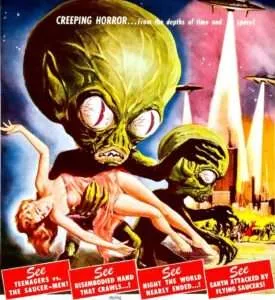Before moving on to the list of the best films to watch about Sherlock Holmes, the most famous private investigator in the world, let’s take a look at how the literary character of Sherlock Holmes, his author, his story was born.
The books of Sherlock Holmes

Sherlock Holmes is a literary character of mystery stories created by Arthur Conan Doyle at the end with the novel A Study in Red of 1887. He is one of the most famous private investigators in literature, theater and cinema. He is presented as a man of 60 years of age with a penetrating gaze, an aquiline nose, an alert and intelligent expression. The character’s past is not told by Doyle, except for brief hints. He has a friend who always accompanies him on his adventures, Dr. Watson, met while he was looking for a roommate to share an apartment. who tells the stories in the first person.
When did Sherlock Holmes die?
Sherlock Holmes marked Doyle’s career as a writer, who decided to end the fiction series with the book The Last Adventure, causing his character to die in a duel. But later the writer, due to the great success and the public’s request, was persuaded to write more novels starring the now famous detective. In The Hound of the Baskervilles, Doyle sets the tale in the years leading up to the investigator’s death,before bringing him back to life in The Adventure of the Empty House, inventing the fact that for three previous years Holmes hid to become an agent. British government secret.
Where did Sherlock Holmes live?

Holmes is a profound connoisseur of the London criminal world and has numerous informants who help him solve his cases. Holmes owns a hound dog, who is sometimes instrumental in solving mysteries. He does not believe in magic and the irrational, he is not based on actions inspired by faith and he does not explicitly profess any religious faith: he prefers the rational and scientific verification of facts and proofs. He is probably an atheist.
221B Baker Street is the address of London residence Sherlock Holmes’ in all novels written by Arthur Conan Doyle. Finally, after a long career, Holmes retires first to Sussex to study beekeeping, then to a farm near Eastbourne, devoting himself to philosophy and agriculture, not before having helped England during the First World War as an agent of the government. Holmes has a literary and philosophical interest, he cites the Bible, Shakespeare and Goethe, he attended university and later left without graduating. He has written a naval treatise and one on tobacco, knows the art of fencing, boxing and various oriental martial arts.
Sherlock Holmes’ only real friend is Watson, he doesn’t trust anyone else. He is not a seducer and he is not particularly attracted to women and amorous adventures that distract him from the clarity and logic necessary to solve mysteries: his private life is almost non-existent. He has distrust of Scotland Yard and Inspector Lestrade. Sometimes he falls into depression and uses hard drugs such as cocaine. In subsequent novels, however, he will only keep the vice of the pipe. Sherlock Holmes is a rationalist and a scientific method for solving his cases: he observes and collects evidence and then makes deductions.
William Gillette was one of the first interpreters of the detective taking him to the theater 1300 times, in a silent film of 1916 and in the first radio drama dedicated to the character. Most of the stories are told in the first person by Watson who usually accompanies Sherlock Holmes during the investigation. When the character of Sherlock Holmes entered in the public domain, other writers tried their hand at writing short stories about the famous detective, inventing stories about aspects of the character little dealt with by Conan Doyle: his youth, the years of his alleged death, the encounters with characters. important of the company.
In Sherlock Holmes’ apocryphal novels of the 1960s, the detective confronts Jack the Ripper, cocaine addiction with the help of Sigmund Freud, anarchist groups on the Adriatic Sea, exotic adventures in the Far East. At the end of the nineties even the famous writer Stephen King is confronted with a story inspired by the famous English detective entitled nightmares and delusions.
The Movies about Sherlock Holmes
The movies made on Sherlock Holmes are many: perhaps they are not among the must-see masterpieces in the history of cinema, but some of these films are absolutely enjoyable and worth a look to these titles.
The Sign of the Four (1932)

“The Sign of Four” is a 1932 film based on Sir Arthur Conan Doyle’s novel of the same name. This cinematic adaptation is one of the early sound films featuring the character Sherlock Holmes. Here are some key details about the 1932 version of “The Sign of Four”:
Plot: The film’s plot closely follows that of Conan Doyle’s novel. The story revolves around the mystery of the disappearance of Mary Morstan’s father and the discovery of a precious gem called “The Sign of Four,” which is central to the mystery. Mary Morstan seeks the help of Sherlock Holmes and Dr. Watson to solve the case. Throughout the investigation, Holmes and Watson follow intricate clues that lead them into a series of intriguing adventures.
Performances: In the 1932 film, Arthur Wontner portrays Sherlock Holmes, while Ian Hunter plays Dr. John Watson. These actors received attention for their portrayals of the iconic Holmes and Watson characters. Wontner is often considered one of the early actors to capture the essence of the detective.
Direction: The film was directed by Graham Cutts and is known for being one of the early sound adaptations of Sherlock Holmes adventures.
Reception: “The Sign of Four” from 1932 was well-received at the time and helped renew interest in Sherlock Holmes stories on the big screen. Despite its age, the film continues to be appreciated by fans of the detective and the community of enthusiasts of Arthur Conan Doyle’s works.
This 1932 film adaptation of “The Sign of Four” is one of the early films that brought Sherlock Holmes stories into the era of sound cinema, and it is a piece of cinema history. If you are a fan of Holmes’ adventures, you may find it interesting to see how the character was portrayed in such a pioneering period of filmmaking.
A Study in Scarlet (1933)
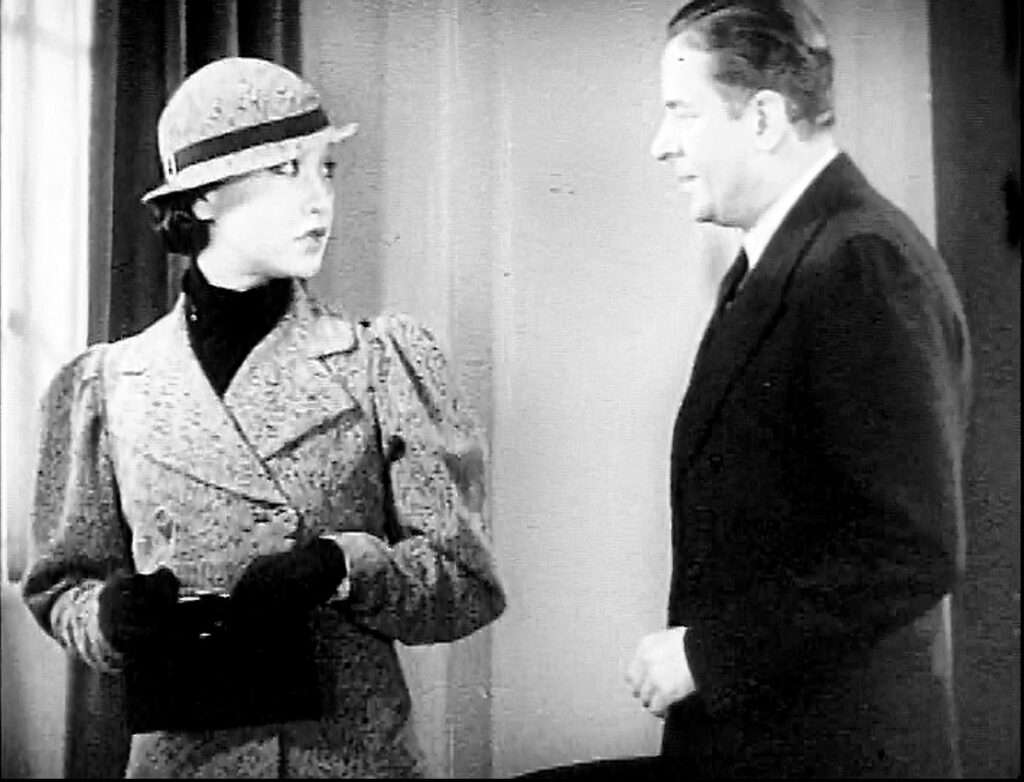
“A Study in Scarlet” has been adapted into several films and television productions over the years. However, one of the most notable film adaptations of the novel is the 1933 film titled “A Study in Scarlet,” a British film directed by Edwin L. Marin. This adaptation closely follows the plot of Arthur Conan Doyle’s novel and features Reginald Owen as Sherlock Holmes and Anna May Wong as Mrs. Pyke.
Here are some key details about the 1933 film adaptation of “A Study in Scarlet”:
Plot: The film follows the plot of the original novel, with Sherlock Holmes and Dr. Watson teaming up to solve a complex murder mystery. The story begins with the discovery of a body in a locked room, and Holmes applies his brilliant deduction to crack the case. The latter part of the film shifts to the United States, where the story ties into events in the American West and the history of the Mormons.
Performances: In the 1933 film, Reginald Owen portrays Sherlock Holmes, while Warburton Gamble plays Dr. John Watson. Anna May Wong takes on the role of Mrs. Pyke, one of the key characters in the tale.
Reception: The 1933 film adaptation received generally positive reception and helped keep interest alive in Sherlock Holmes stories on the big screen. While it may not be one of the most well-known or celebrated films based on Holmes’ stories, it remains a piece of cinematic history associated with the iconic character.
“A Study in Scarlet” is one of the earliest Sherlock Holmes stories and laid the foundation for the character’s future success in Conan Doyle’s subsequent works and in numerous film and television productions. This 1933 film adaptation offers a glimpse into Holmes and Watson’s first adventure through the interpretation of actors from that era.
The Triumph of Sherlock Holmes (1935)
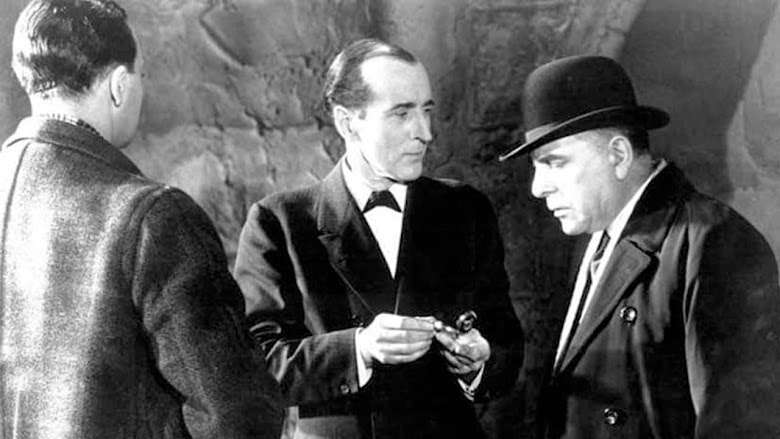
“The Triumph of Sherlock Holmes” is a 1935 British mystery film based on the character Sherlock Holmes created by Sir Arthur Conan Doyle. This film is part of the series of Sherlock Holmes films produced by Twickenham Studios during the 1930s, with Arthur Wontner portraying Sherlock Holmes and Ian Fleming as Dr. John Watson.
Here are some key details about “The Triumph of Sherlock Holmes”:
Plot: The film’s plot revolves around the return of Professor Moriarty, Sherlock Holmes’ arch-nemesis, who was believed to have perished in a waterfall plunge at the Reichenbach Falls in a previous adventure. Moriarty resurfaces and resumes his criminal activities, prompting Holmes and Watson to once again confront their formidable adversary. The film features an intricate mystery and a climactic showdown between Holmes and Moriarty.
Performances: Arthur Wontner reprises his role as Sherlock Holmes, and Ian Fleming returns as Dr. John Watson. Their performances in this film are consistent with their portrayals in earlier entries in the series.
Reception: “The Triumph of Sherlock Holmes” was generally well-received by audiences and is regarded as one of the more faithful and successful adaptations of Arthur Conan Doyle’s original stories. It captures the essence of Holmes’ deductive brilliance and the dynamic between Holmes and Watson.
This film is notable for its interpretation of the iconic Holmes-Moriarty rivalry and its attempt to stay faithful to the source material. While not as well-known as some other adaptations of Sherlock Holmes stories, “The Triumph of Sherlock Holmes” remains a part of the rich cinematic history of the detective and is appreciated by fans of the character.
The Hound of the Baskervilles (1939)
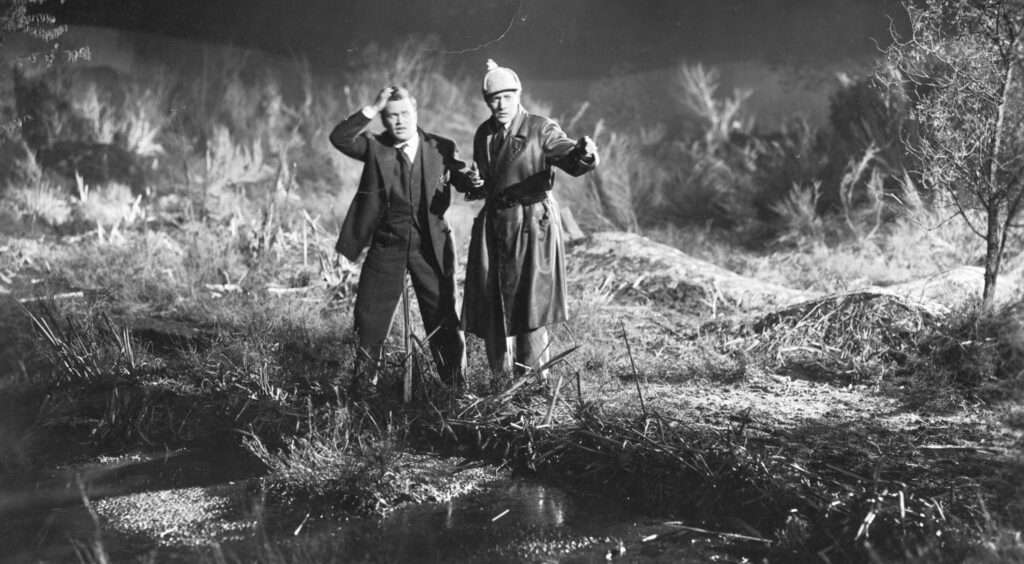
“The Hound of the Baskervilles” (1939) is a film based on Sir Arthur Conan Doyle’s famous novel “The Hound of the Baskervilles.” This film is one of the most well-known and acclaimed Sherlock Holmes movies and is part of the series of films starring Basil Rathbone as Holmes and Nigel Bruce as Dr. John Watson.
Here are some key details about “The Hound of the Baskervilles” (1939):
Plot: The film follows the plot of Conan Doyle’s novel. The story begins when Dr. John Watson (played by Nigel Bruce) is visited by a country doctor, Dr. Mortimer (played by Lionel Atwill), who expresses concern for the safety of Sir Henry Baskerville (played by Richard Greene), the new heir to Baskerville Hall. The Baskerville family is believed to be cursed due to a legend involving a hellhound that kills heirs. Sherlock Holmes (played by Basil Rathbone) is tasked with investigating the matter and solving the mystery behind the hound.
Direction: The film was directed by Sidney Lanfield.
Performances: Basil Rathbone is renowned for his classic portrayal of Sherlock Holmes in this film series. His Holmes is depicted as intelligent, cool, and rational. Nigel Bruce portrays Dr. Watson in a more humorous and light-hearted manner than in the original literature, but their on-screen chemistry was highly appreciated.
Reception: “The Hound of the Baskervilles” is considered one of the most successful and iconic films in the Rathbone and Bruce series as Holmes and Watson. It has been praised for its faithfulness to the original story and for creating a dark and mysterious atmosphere in the Dartmoor marshland where much of the events take place. The film continues to be appreciated by fans of the genre.
This 1939 film is just one of the many cinematic adaptations of “The Hound of the Baskervilles,” but it is certainly one of the most well-known and beloved. It stands as a significant milestone in the long cinematic history of the Sherlock Holmes character.
The Adventures of Sherlock Holmes (1939)
“The Adventures of Sherlock Holmes” is a 1939 film based on the characters created by Sir Arthur Conan Doyle, with Basil Rathbone in the role of Sherlock Holmes and Nigel Bruce as Dr. John Watson. This film is one of the many film adaptations of Sherlock Holmes stories starring Rathbone and Bruce during the 1930s and 1940s.
Plot: The film is a collection of short stories featuring Sherlock Holmes taken from Conan Doyle’s works. The stories include “A Scandal in Bohemia,” “The Red-Headed League,” and “A Case of Identity.” In each of these stories, Holmes and Watson tackle unique mysteries and puzzles that require Holmes’ deductive acumen to solve.
Performances: Basil Rathbone reprises his role as Sherlock Holmes, while Nigel Bruce returns as Dr. Watson. Their performances in the series have become iconic, and Rathbone is often regarded as one of the finest portrayals of Holmes.
Direction: The film was directed by Alfred L. Werker and is known for capturing the Victorian atmosphere of Conan Doyle’s original stories.
Reception: “The Adventures of Sherlock Holmes” was well-received by both critics and audiences. It is known for its faithfulness to Conan Doyle’s original stories and the convincing performances of Rathbone and Bruce in their respective roles. The film helped solidify Basil Rathbone’s reputation as one of the most celebrated actors to portray Sherlock Holmes.
This film adaptation is part of the series of Sherlock Holmes films starring Basil Rathbone and Nigel Bruce and is beloved by Holmes fans for its authenticity and its ability to capture the essence of the famous detective.
Sherlock Holmes and the Secret Weapon (1942)

“Sherlock Holmes and the Secret Weapon” is a 1942 film that is part of the Sherlock Holmes film series starring Basil Rathbone as Sherlock Holmes and Nigel Bruce as Dr. John Watson. This film is also known as “Sherlock Holmes in Washington” in the UK. It is one of the films in the series produced during the 1940s during World War II and features Sherlock Holmes involved in a espionage plot.
Here are some key details about “Sherlock Holmes and the Secret Weapon” (or “Sherlock Holmes in Washington”):
Plot: In the film, Sherlock Holmes becomes involved in a mission to protect the famous Swiss scientist, Dr. Franz Tobel, who has invented a new secret weapon for the British government. Dr. Tobel has escaped from Nazi Germany and needs to be safeguarded while working on replicating the secret weapon in Britain. Holmes and Dr. Watson must prevent the weapon from falling into the hands of the Nazis.
Direction: The film was directed by Roy William Neill, who directed many of the Holmes films in the Rathbone and Bruce series.
Performances: Basil Rathbone returns in the role of Sherlock Holmes, and Nigel Bruce portrays Dr. Watson. Their performances as the iconic detective duo are a highlight of the film.
Reception: “Sherlock Holmes and the Secret Weapon” was well-received by fans of the series and is one of the more well-known installments in the Holmes series with Rathbone and Bruce. The espionage plot and the wartime setting add an extra layer of suspense to the film, making it a favorite among fans of Holmes’ adventures.
This film, along with others in the series, offers a faithful portrayal of the Holmes and Watson characters and presents an engaging and intrigue-filled plot. It’s another example of the enduring popularity of Sherlock Holmes stories and the performances of Basil Rathbone and Nigel Bruce in their iconic roles.
Sherlock Holmes and the Voice of Terror (1942)
“Sherlock Holmes and the Voice of Terror” is a 1942 film based on the characters created by Sir Arthur Conan Doyle, with Basil Rathbone reprising his role as Sherlock Holmes and Nigel Bruce as Dr. John Watson. This film is part of the series of Sherlock Holmes films produced by Universal Pictures during the 1940s.
Here are some key details about “Sherlock Holmes and the Voice of Terror” from 1942:
Plot: In this film, Holmes is called upon to investigate a series of mysterious Nazi broadcasts known as “The Voice of Terror” during World War II. These broadcasts contain information about British military operations and are meant to demoralize the British population. Holmes, with the assistance of Dr. Watson and British intelligence, embarks on a mission to uncover the identity of the person behind the broadcasts and put an end to their activities.
Performances: Basil Rathbone once again portrays Sherlock Holmes, and Nigel Bruce returns as Dr. Watson. The chemistry between Rathbone and Bruce in their respective roles remains a highlight of the film.
Direction: The film was directed by John Rawlins and is set against the backdrop of wartime London. It captures the tension and espionage of the era.
Reception: “Sherlock Holmes and the Voice of Terror” was released during a time when World War II was ongoing, and it played on the fears and concerns of the period. The film was generally well-received by audiences and contributed to the popularity of the Rathbone and Bruce portrayals of Holmes and Watson.
This film is notable for its wartime setting and the way it integrated Sherlock Holmes into the context of the global conflict. While it departs from the original Victorian-era settings of Conan Doyle’s stories, it successfully places Holmes in a new and compelling scenario, adding a unique dimension to the character’s legacy.
Sherlock Holmes in Washington (1943)
“Sherlock Holmes in Washington” is a 1943 film based on the characters created by Sir Arthur Conan Doyle, with Basil Rathbone reprising his role as Sherlock Holmes and Nigel Bruce as Dr. John Watson. This film is part of the series of Sherlock Holmes film adaptations produced by Universal Pictures during the 1940s.
Plot: In the film, Holmes becomes involved in a delicate national security mission during World War II. He must recover an important stolen document known as the “Washington Letter,” which contains crucial military secrets. The plot primarily unfolds in Washington, D.C., where Holmes and Watson must contend with espionage and intrigue.
Performances: Basil Rathbone portrays Sherlock Holmes, while Nigel Bruce returns as Dr. John Watson. The pair of actors deliver their typical and beloved performances in the roles of the iconic characters.
Direction: The film was directed by Roy William Neill and is known for capturing the atmosphere of wartime Washington, D.C.
Reception: “Sherlock Holmes in Washington” was well-received by audiences and helped maintain interest in Holmes’ adventures on the big screen during the years of World War II. While it may be considered one of the lesser-known films in the Rathbone and Bruce series, it remains an appreciated part of the Sherlock Holmes filmography.
This film is notable for its espionage-themed plot and its setting in the United States during the war, which sets it apart from many other adaptations of Sherlock Holmes stories.
Sherlock Holmes Faces Death (1943)
“Sherlock Holmes Faces Death” is a 1943 film based on the characters created by Sir Arthur Conan Doyle, with Basil Rathbone returning as Sherlock Holmes and Nigel Bruce as Dr. John Watson. This film is part of the series of Sherlock Holmes films produced by Universal Pictures during the 1940s.
Here are some key details about “Sherlock Holmes Faces Death” from 1943:
Plot: In this film, Holmes and Watson are called to investigate a series of mysterious deaths at Musgrave Manor, a stately home that has been converted into a military hospital during World War II. The deaths are linked to a centuries-old family curse and the disappearance of the Musgrave family butler. Holmes must unravel the secrets of the manor and the Musgrave family history to solve the case.
Performances: Basil Rathbone reprises his role as Sherlock Holmes, and Nigel Bruce returns as Dr. John Watson. Their on-screen chemistry remains a highlight of the film series.
Direction: The film was directed by Roy William Neill and effectively creates an eerie atmosphere within the manor, adding to the mystery and tension of the story.
Reception: “Sherlock Holmes Faces Death” received positive reviews and was well-received by audiences. It is noted for its engaging mystery plot and the continued excellence of Rathbone and Bruce in their iconic roles.
This film is known for its intriguing mystery, atmospheric setting, and the way it successfully adapted Holmes to the wartime context of World War II. It is regarded as one of the stronger entries in the Basil Rathbone and Nigel Bruce series of Sherlock Holmes films.
The Spider Woman (1944)
“The Spider Woman” is a 1944 film based on the characters created by Sir Arthur Conan Doyle, featuring Basil Rathbone as Sherlock Holmes and Nigel Bruce as Dr. John Watson. This film is part of the series of Sherlock Holmes films produced by Universal Pictures during the 1940s.
Plot: In this film, Holmes is called upon to investigate a series of mysterious deaths that appear to be linked to a woman known as “The Spider Woman.” This woman lures her victims into her web, and they end up dead under unusual circumstances. Holmes and Watson are tasked with unraveling the mystery behind these deaths and stopping The Spider Woman’s deadly scheme.
Performances: Basil Rathbone reprises his role as Sherlock Holmes, while Nigel Bruce returns as Dr. John Watson. The film showcases their enduring chemistry in their respective roles.
Direction: Directed by Roy William Neill, the film effectively creates an atmosphere of suspense and tension as Holmes delves into the investigation.
Reception: “The Spider Woman” received positive reviews and was well-received by audiences. It is noted for its intriguing mystery plot and the continued excellence of Rathbone and Bruce in their iconic roles.
This film is known for its suspenseful and mysterious storyline, as well as its memorable portrayal of The Spider Woman as a cunning adversary for Holmes. It remains a beloved entry in the Basil Rathbone and Nigel Bruce series of Sherlock Holmes films.
The Scarlet Claw (1944)
“The Scarlet Claw” is a 1944 film based on the characters created by Sir Arthur Conan Doyle, featuring Basil Rathbone as Sherlock Holmes and Nigel Bruce as Dr. John Watson. This film is part of the series of Sherlock Holmes films produced by Universal Pictures during the 1940s.
Here are some key details about “The Scarlet Claw” from 1944:
Plot: In this film, Holmes and Watson travel to a remote Canadian village called La Mort Rouge (The Red Death). The village is plagued by a series of gruesome murders, and the locals believe that a supernatural creature is responsible. Holmes is called upon to investigate these mysterious deaths and uncover the truth behind the legend of The Red Death.
Performances: Basil Rathbone reprises his role as Sherlock Holmes, and Nigel Bruce returns as Dr. John Watson. The film showcases their well-established chemistry in their iconic roles.
Direction: Directed by Roy William Neill, the film effectively creates an eerie and suspenseful atmosphere as Holmes and Watson confront the supernatural legends surrounding The Red Death.
Reception: “The Scarlet Claw” received positive reviews and was well-received by audiences. It is known for its atmospheric setting and the way it incorporates elements of horror into the traditional Sherlock Holmes mystery.
This film is notable for its blending of the Sherlock Holmes detective genre with elements of horror and its unique setting in a remote Canadian village. It remains a favorite among fans of the Basil Rathbone and Nigel Bruce series of Sherlock Holmes films.
The Pearl of Death (1944)
“The Pearl of Death” is a 1944 film based on the characters created by Sir Arthur Conan Doyle, featuring Basil Rathbone as Sherlock Holmes and Nigel Bruce as Dr. John Watson. This film is part of the series of Sherlock Holmes films produced by Universal Pictures during the 1940s.
Here are some key details about “The Pearl of Death” from 1944:
Plot: In this film, Holmes and Watson are drawn into the world of stolen gems and murder when a famous pearl known as the “Star of Rhodesia” is stolen from a museum. The thief, who is willing to kill to protect the pearl’s secret hiding place, sets off a series of deadly events. Holmes is tasked with recovering the pearl and unraveling the mystery surrounding it.
Performances: Basil Rathbone reprises his role as Sherlock Holmes, and Nigel Bruce returns as Dr. John Watson. The film showcases their well-established chemistry in their iconic roles.
Direction: Directed by Roy William Neill, the film effectively combines elements of mystery and suspense as Holmes investigates the theft of the precious pearl.
Reception: “The Pearl of Death” received positive reviews and was well-received by audiences. It is noted for its engaging mystery plot and the continued excellence of Rathbone and Bruce in their iconic roles.
This film is known for its intriguing mystery centered around a stolen pearl and the cat-and-mouse game between Holmes and the cunning thieves. It remains a beloved entry in the Basil Rathbone and Nigel Bruce series of Sherlock Holmes films.
The House of Fear (1945)
“The House of Fear” is a 1945 film based on the characters created by Sir Arthur Conan Doyle, featuring Basil Rathbone as Sherlock Holmes and Nigel Bruce as Dr. John Watson. This film is part of the series of Sherlock Holmes films produced by Universal Pictures during the 1940s.
Plot: In this film, Holmes and Watson are called to investigate a series of murders among the members of an exclusive club called “The Good Comrades.” Each member receives a mysterious and deadly package containing a piece of a ceramic object known as a “Hira-ata-kan” which is used in a Japanese ritual. Holmes must uncover the connection between these murders and the strange ritual object.
Performances: Basil Rathbone reprises his role as Sherlock Holmes, and Nigel Bruce returns as Dr. John Watson. The film showcases their enduring chemistry in their respective roles.
Direction: Directed by Roy William Neill, the film effectively creates a suspenseful and mysterious atmosphere as Holmes unravels the mysteries surrounding the murders.
Reception: “The House of Fear” received positive reviews and was well-received by audiences. It is noted for its intriguing mystery plot and the continued excellence of Rathbone and Bruce in their iconic roles.
This film is known for its engaging and puzzling mystery, as well as its atmospheric setting within the eerie club. It remains a beloved entry in the Basil Rathbone and Nigel Bruce series of Sherlock Holmes films.
Sherlock Holmes and the Woman in Green (1945)
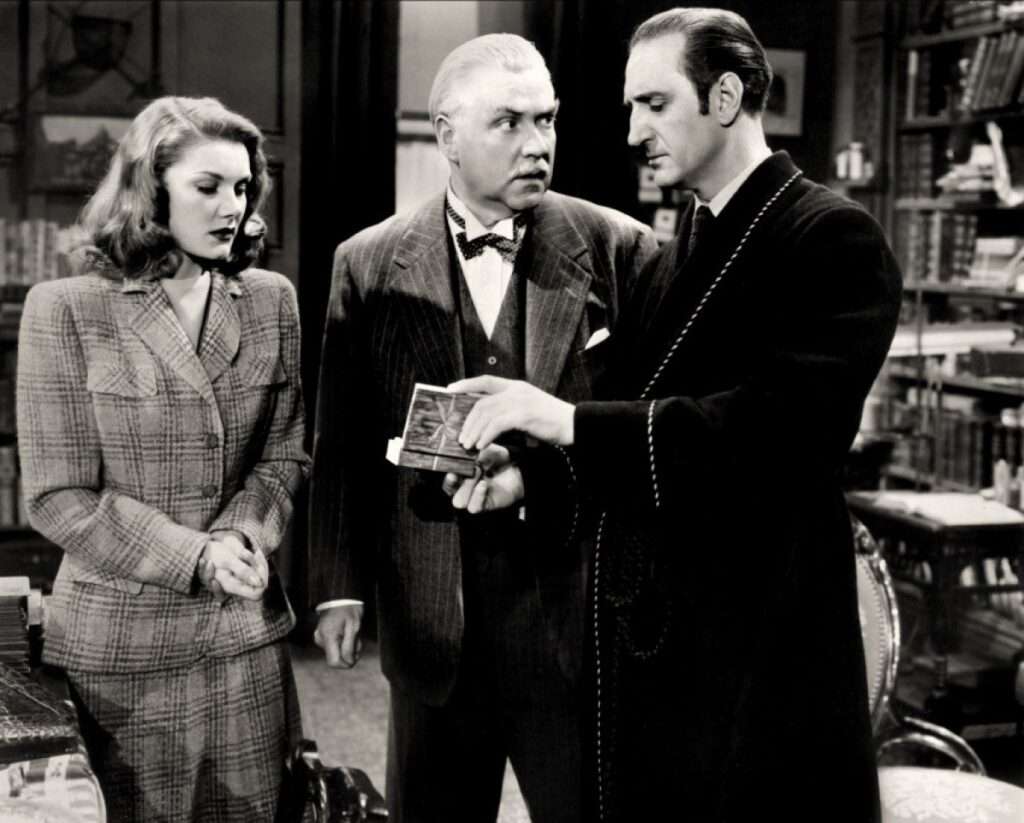
“Sherlock Holmes and the Woman in Green” is a 1945 film that is part of the Sherlock Holmes film series starring Basil Rathbone as Sherlock Holmes and Nigel Bruce as Dr. John Watson. This film is based on Sir Arthur Conan Doyle’s characters and is known for its mysterious and suspenseful storyline.
Here are some key details about “Sherlock Holmes and the Woman in Green”:
Plot: In the film, Sherlock Holmes is called in to investigate a series of murders in which young women are found strangled and left with a finger severed. Holmes becomes involved in the case after he is approached by a woman named Lydia Marlowe (played by Hillary Brooke), who is concerned about her missing husband. As Holmes delves deeper into the case, he uncovers a sinister plot involving hypnotism, blackmail, and a mysterious woman in green.
Direction: The film was directed by Roy William Neill, who directed several films in the Sherlock Holmes series with Rathbone and Bruce.
Performances: Basil Rathbone reprises his role as Sherlock Holmes, and Nigel Bruce returns as Dr. Watson. Their performances as the iconic detective duo are a central aspect of the film.
Reception: “Sherlock Holmes and the Woman in Green” is generally well-regarded by fans of the series. It is praised for its atmospheric and suspenseful storytelling, as well as the chemistry between Rathbone and Bruce in their respective roles. The film is notable for its intriguing mystery and the use of hypnosis as a central plot element.
This film, like others in the series, offers a faithful representation of the Holmes and Watson characters and presents a compelling mystery for viewers to enjoy. It is another example of the enduring popularity of Sherlock Holmes stories and the enduring appeal of Basil Rathbone and Nigel Bruce in their iconic roles.
Pursuit to Algiers (1945)
“Pursuit to Algiers” is a 1945 film based on the characters created by Sir Arthur Conan Doyle, featuring Basil Rathbone as Sherlock Holmes and Nigel Bruce as Dr. John Watson. This film is part of the series of Sherlock Holmes films produced by Universal Pictures during the 1940s.
Plot: In this film, Holmes and Watson are entrusted with the safety of the heir to the throne of a fictional European kingdom, who is traveling incognito to England. They must protect him from assassins who are trying to prevent him from reaching his destination safely. The journey takes them aboard a ship headed for Algiers, where they must solve a murder mystery while ensuring the prince’s safety.
Performances: Basil Rathbone reprises his role as Sherlock Holmes, and Nigel Bruce returns as Dr. John Watson. The film showcases their enduring chemistry in their respective roles.
Direction: Directed by Roy William Neill, the film combines elements of mystery, adventure, and suspense as Holmes and Watson navigate a perilous journey.
Reception: “Pursuit to Algiers” received positive reviews and was well-received by audiences. It is noted for its adventurous storyline and the continued excellence of Rathbone and Bruce in their iconic roles.
This film is known for its thrilling adventure and the unusual setting of a ship voyage, which adds a unique dimension to the Sherlock Holmes series. It remains a beloved entry in the Basil Rathbone and Nigel Bruce series of Sherlock Holmes films.
Terror by Night (1946)
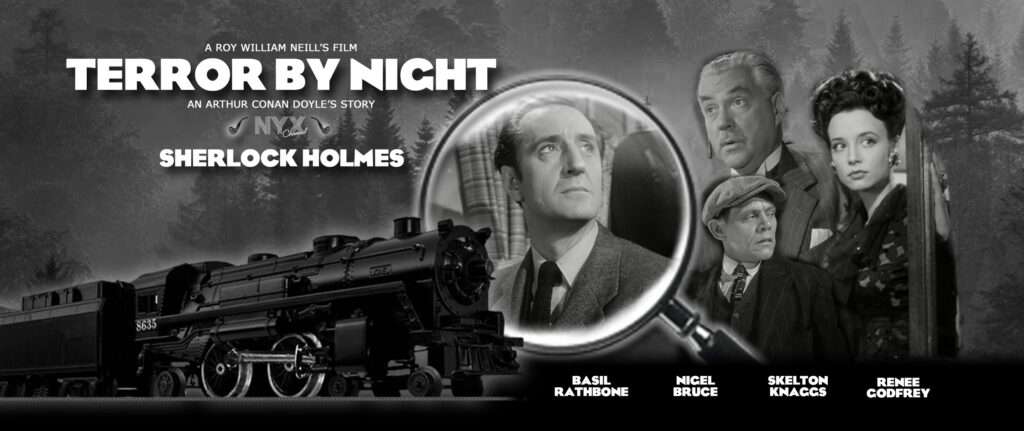
“Terror by Night” is a 1946 Sherlock Holmes film that is part of the series of movies starring Basil Rathbone as Sherlock Holmes and Nigel Bruce as Dr. John Watson. The film is notable for being one of the many adaptations of Arthur Conan Doyle’s detective stories.
Here are some key details about “Terror by Night”:
Plot: In “Terror by Night,” Sherlock Holmes and Dr. Watson are tasked with safeguarding the famous Star of Rhodesia, a valuable diamond, as it is transported by train from London to Edinburgh. During the journey, the diamond is stolen, and a murder occurs. Holmes must solve the mystery of the stolen diamond and the murder, all within the confines of the moving train.
Direction: The film was directed by Roy William Neill, who directed several other films in the series.
Performances: Basil Rathbone reprises his role as Sherlock Holmes, and Nigel Bruce returns as Dr. Watson. Their chemistry as the iconic detective duo is a highlight of the film.
Reception: “Terror by Night” is generally well-received by fans of the Rathbone and Bruce Sherlock Holmes series. It is appreciated for its suspenseful plot and the way it effectively utilizes the confined setting of a train to create tension and intrigue. While not considered the absolute best of the series, it remains a classic installment in the Holmes filmography.
Like other films in the series, “Terror by Night” offers a faithful representation of the Holmes and Watson characters and provides an engaging mystery for audiences to enjoy. It is a testament to the enduring popularity of Arthur Conan Doyle’s detective stories and the enduring appeal of Basil Rathbone and Nigel Bruce in their respective roles.
Dressed to Kill (1946)

“Dressed to Kill” is a 1946 film that is part of the series of movies featuring Basil Rathbone as Sherlock Holmes and Nigel Bruce as Dr. John Watson. This film is based on one of Arthur Conan Doyle’s short stories titled “The Adventure of the Six Napoleons.” It’s important to note that “Dressed to Kill” is known by a different title in the United Kingdom, where it was released as “Prelude to Murder.”
Here are some key details about “Dressed to Kill” (or “Prelude to Murder”):
Plot: The film features Sherlock Holmes and Dr. Watson dealing with a series of mysterious murders linked to seemingly insignificant objects, including some Napoleon Bonaparte statues. Holmes must solve the mystery behind these murders and uncover the motive behind the theft and destruction of these statues.
Direction: The film was directed by Roy William Neill, who directed many of the films in the Rathbone and Bruce series.
Performances: Basil Rathbone returns in the role of Sherlock Holmes, and Nigel Bruce portrays Dr. Watson. Their portrayal of the detective duo remains a strong point of this film.
Reception: “Dressed to Kill” was well-received by fans of the Holmes series with Rathbone and Bruce. It’s known for its engaging plot and intriguing mystery involving everyday objects. While it may not be considered one of the most famous films in the series, it continues to be appreciated by enthusiasts of the world’s most famous literary detective.
Like other films in the series, “Dressed to Kill” offers a faithful representation of the Holmes and Watson characters and presents an interesting investigative plot. It’s another example of the enduring popularity of Sherlock Holmes stories and Basil Rathbone’s portrayal of the iconic detective.





